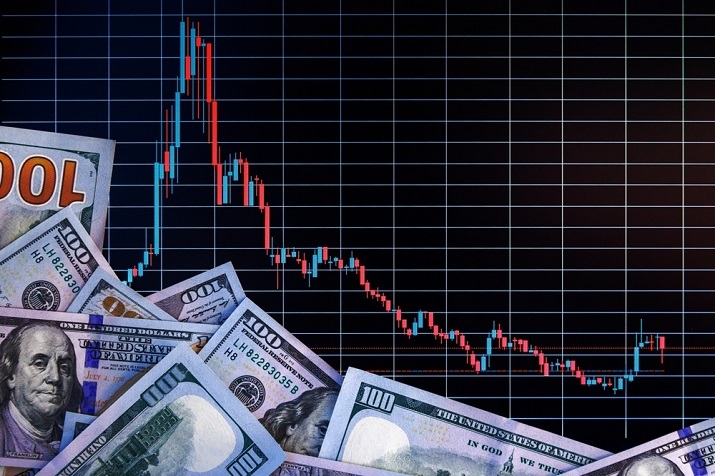
 Data Structure
Data Structure Networking
Networking RDBMS
RDBMS Operating System
Operating System Java
Java MS Excel
MS Excel iOS
iOS HTML
HTML CSS
CSS Android
Android Python
Python C Programming
C Programming C++
C++ C#
C# MongoDB
MongoDB MySQL
MySQL Javascript
Javascript PHP
PHP
- Selected Reading
- UPSC IAS Exams Notes
- Developer's Best Practices
- Questions and Answers
- Effective Resume Writing
- HR Interview Questions
- Computer Glossary
- Who is Who
Wash Trading
Introduction
We will delve into the definition of wash trading, how it works, and its differences compared to market making, high-frequency trading, and its relevance in the world of cryptocurrencies. Additionally, we will discuss the reasons why wash trading is illegal and explore strategies to detect and prevent this deceptive practice. This tutorial provides an in-depth exploration of wash trading, a manipulative trading technique that distorts market activity and undermines market integrity.

Wash Trading: Definition and Explanation
Wash trading is a term used to describe a manipulative trading technique in which a person or institution repeatedly buys and sells the same financial asset or security to give the appearance of trading activity without really changing ownership significantly. Wash trading frequently has one of three goals in mind to manipulate market prices, generate fictitious trade activity, or fool other market participants.
Wash trading is the practice of a trader or business acting as both a buyer and a seller of a financial asset or security at the same time. They carry out trades at same or equal prices, giving the impression that actual trading activity is taking place. In actuality, neither the ownership nor the transfer of the assets has changed.
Wash trading aims to trick other market participants, inflate the perception of market demand, or manipulate market indicators like trade volume or price changes. This dishonest behaviour is frequently made possible by many accounts or cooperation between parties, giving the manipulator the ability to intentionally affect market conditions.
Examples of Wash Trading
Wash trading examples include the following
A trader who frequently buys and sells the same stock to provide the appearance of strong trading activity.
Coordinated trading between two parties in which the same security is traded repeatedly without a real change in ownership.
Manipulative trades carried out by a single person utilizing many accounts to fudge trading volumes.
Trading between accounts controlled by the same business in order to feign market demand.
Placing trades at almost comparable prices in order to manipulate the market and move prices in a particular direction.
How to Track Wash Trading
While tracking wash trade can be difficult, it is essential for preserving market integrity. Exchanges and regulators use a variety of techniques to identify and prevent wash trading. These consist of highly developed monitoring programmes that examine order book information, volume abnormalities, and trade trends. To spot shady trading activity, they could also use algorithms and data analysis approaches. The introduction of strict reporting standards and cooperation with market participants can improve detection efforts even more.
Wash Trading Vs Market Making
Wash Trading |
Market Making |
|---|---|
Wash trading is the act of simultaneously purchasing and disposing of the same security without actually changing ownership. |
Market making is a legitimate activity whereby people or businesses regularly quote the buy and sell prices for a security in |
Wash trading is seen as illegal or unethical since it frequently involves manipulating pricing or misleading other market participants. |
By reducing bid-ask spreads, fostering market efficiency, and standing ready to purchase or sell assets at any time, market makers enable trade. |
Wash Trading Vs High Frequency Trading
High-frequency trading (HFT) and wash trading are two different techniques used in the financial markets.
Wash Trading |
High-Frequency Trading (HFT) |
|---|---|
Wash trading is the practice of purchasing and selling the same security while feigning ownership changes in order to artificially create trading activity. |
High-frequency trading uses cutting-edge technology and algorithms to carry out a lot of trades in a very short amount of time. HFT seeks to profit on marginal pricing differences and market imperfections |
Wash Trading is illegal and manipulative. |
HFT is a legal practice that supports market liquidity and efficiency, despite the fact that it is debatable. It can also give rise to questions regarding the stability and fairness of the market. |
Wash Trading in Cryptocurrencies
In the context of cryptocurrencies, wash trading is possible, just like it is in conventional financial markets.
-
In the world of cryptocurrencies, wash trading entails fabricating trading activity by carrying out trades across various accounts or wallets managed by the same entity.
Inflating trading volume, misleading other market participants, and possibly manipulating prices are the goals of this scheme.
Trading in washed cryptocurrency is regarded as unethical and might erode market integrity and transparency.
To maintain fair and orderly trading in the cryptocurrency markets, regulatory agencies and exchanges have been putting measures in place to detect and prevent wash trading, including improved monitoring systems and tougher reporting requirements.
Why Wash Trading is Illegal?
Wash trade is prohibited for a number of reasons.
First off, wash trading skews market indicators like trade volume and price changes, which makes it challenging for investors to make wise choices.
By generating a misleading impression of market activity and demand, wash trading compromises the integrity and fairness of the market.
Furthermore, wash trading has the capacity to artificially influence prices, affecting other market players and possibly causing market instability.
Additionally, wash trading is against the rules and laws intended to maintain fair and organized markets.
Therefore, wash trading is strictly forbidden and subject to legal repercussions in order to preserve market integrity and safeguard investors.
Avoiding Wash Trading
It is essential to uphold transparency and honesty in trading activity in order to prevent wash trading. Market players should follow legal requirements and moral principles. Exchanges and authorities use highly developed surveillance technologies to identify and prevent wash trading. Trading partners should not be used, and traders should refrain from self-trading. Wash trading can be located and avoided by implementing stringent compliance and reporting standards, using transaction monitoring tools, and fostering whistleblower programmes.
Conclusion
Wash trading, to sum up, is a manipulative technique that entails fabricating fake trading activity without a real change in ownership. As it falsifies market indicators and threatens market integrity, it is regarded as illegal and unethical. To promote openness and fairness in the financial markets and safeguard investors from dishonest practises, regulatory agencies and exchanges have put in place procedures to detect and discourage wash trading.
FAQs
Qns 1. What is wash trading?
Ans. Wash trading is a manipulative trading technique where a person or entity buys and sells the same financial asset without a genuine change in ownership, creating the illusion of trading activity.
Qns 2. Why is wash trading illegal?
Ans. Wash trading is illegal because it distorts market indicators, deceives market participants, and undermines the integrity and fairness of financial markets.
Qns 3. How is wash trading detected?
Ans. Wash trading can be detected through sophisticated surveillance systems, data analysis, and monitoring of trading patterns and volumes

